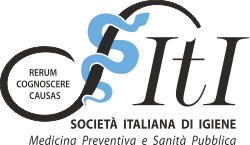Chickenpox is a highly contagious infectious disease caused by a virus, Varicella zoster, which together with rubella, measles, whooping cough and mumps makes up the group of contagious childhood diseases. Those most affected are children between the ages of 5 and 10.
The disease confers permanent protection against subsequent reinfection (immunity); it is very rare for a person to develop chickenpox twice, although the virus is not usually eliminated by the infected organism and remains latent (hidden) at the level of specific nerve structures, generally for life. In 10-20% of cases it can awaken resulting in a clinical picture of shingles (herpes zoster).
Chickenpox is considered very contagious as an affected individual can in turn infect another 12-14 people, especially in the early stages of the rash. The period in which a person is deemed contagious usually lasts from 5 days before to 5 days after the appearance of the first eruptions. The only reservoir for the Varicella virus is humans therefore the disease can spread only among people.
Transmission routes
Transmission occurs through the respiratory droplets that are produced and emitted during coughing and sneezing; in addition, it can be spread through direct contact with the skin lesions produced by both varicella and herpes zoster. If contracted during pregnancy, the virus is able to cross the placenta and infect the embryo or foetus.
Chickenpox is usually a relatively benign disease that resolves in about 7-10 days. If it affects adolescents, adults or people with a compromised immune system (immunosuppressed patients) the disease may take a more aggressive course.
Symptoms and complications
The incubation period of the disease is on average 13-17 days. It generally presents with a rash characterised by macules and papules accompanied by low-grade fever, headache and general malaise.
For the next 3-4 days itchy lesions appear on the head, trunk, face and limbs in successive waves. They later develop into vesicles and pustules that evolve into scabs and fall off with time. Usually a person with varicella has 250 to 500 lesions, but there may be cases in which the lesions themselves are so few that the disease is not noticed. On the other hand, cases can be severe and complicated; these latter mainly concern adolescents, adults and immunocompromised individuals of all ages.
The most frequent complications include bacterial superinfections (in particular, skin infections such as cellulitis in 36% of patients), thrombocytopenia (decrease in the number of platelets in the blood), arthritis, pneumonia, hepatitis, meningoencephalitis and cerebellites.
Immunocompromised subjects develop more frequent complications, including necrotising fasciitis and a greater involvement of the internal organs (for example interstitial pneumonia). In these subjects there is a larger number of skin lesions and they persist for longer, and often bleed (hemorrhagic varicella).
If the disease is contracted during pregnancy, both the mother and the embryo/foetus can experience serious complications:
Severe chickenpox in the mother, especially if the disease is contracted in the last three months of pregnancy
Severe neonatal chickenpox which is often fatal for the newborn if the mother has contracted the infection between 5 days before and 2 days after the birth
Congenital varicella syndrome can occur if the mother becomes infected between the 8th and 20th week of pregnancy.
Impact on the population
In Italy, 90% of chickenpox cases affect children under 14 years of age with a maximum incidence in the range of 1 to 4 year-olds, with an estimated 500,000 cases per year.
In childhood, the frequency of complications and hospitalisations is 3.5% and 0.9% respectively, while the mortality rate for varicella is 2 cases per 100,000 patients.
In the United States, vaccination coverage in 2004 was 89-90% in children between 19-35 months and, compared to 1995, there was a drop in cases of infection of 83% -93%. Cases decreased especially in those aged between 1-4 and 5-9 years old, although a fall was recorded for all age groups, including children and adults, thus demonstrating the effect of herd immunity given by the vaccine.
In Italy, Sicily and Veneto were among the first regions to start the vaccination campaign.
In Sicily, based on the trend of hospitalisations and reports for chicken pox, there was a 75% decrease in admissions and cases of illness from 2003, the year the vaccine was introduced, to 2007. The reduction in cases was also reflected in the non-vaccinable age group (<15 months) and those who had not been vaccinated.
In Veneto, where vaccination was introduced in 2005, there was a significant decrease in the number of varicella cases, falling from about 12,852 cases before the introduction of the vaccine (1999-2004) to 6,054 reports in 2008. Hospital admissions and complications for varicella have also been reduced.
Sources / Bibliography
- Medico e bambino Pagine elettroniche : Le complicanze della varicella come causa di ospedalizzazione: studio retrospettivo di 27 anni M. V. Abate, C. Zanchi, E. Barbi, A. Ventura
- Medico e bambino Pagine elettroniche : Vaccinazione antivaricella nella Regione Sicilia: Impatto sui ricoveri e sulle notifiche M. Cuccia, S. Pollina,A. Cernigliaro, V. Palmigiano
- Ministero della Salute
- Epicentro
- levaccinazioni.it - Informagente - Varicella
- www.msd-italia.it/altre/manuale/sez19/2652496.html
- www.cdc.gov/vaccines/pubs/pinkbook/downloads/varicella.pdf
- Signorelli C. Igiene Epidemiologia Sanità Pubblica 2011; 348-359 C
- Baldo V, Baldovin T, Russo F, Busana MC, Piovesan C, Bordignon G, Giliberti A, Trivello R. Varicella: epidemiological aspects and vaccination coverage in the Veneto Region. BMC Infect Dis. 2009 Sep 8;9:150
- Pozza F, Piovesan C, Russo F, Bella A, Pezzotti P, Emberti Gialloreti L. Impact of universal vaccination on the epidemiology of varicella in Veneto, Italy. Vaccine. 2011 Nov 28;29(51):9480-7



